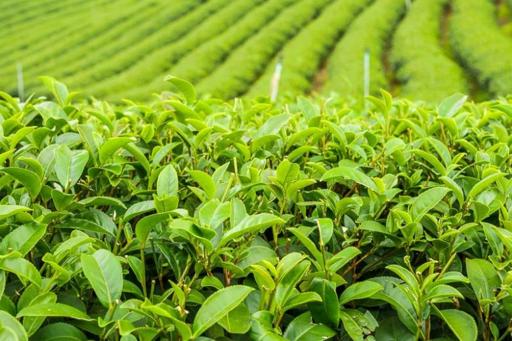Tea
Camellia sinensis
Also known as: Tea Plant

Growing Information
Growth Habit: Shrub
Climate Requirements: Prefers tropical and subtropical climates with temperatures between 10–30°C and abundant rainfall.
Soil Requirements: Acidic, well-drained soils with a pH of 5.5–6.5.
Water Requirements: Requires consistent rainfall or irrigation, with moisture levels maintained year-round.
Planting Instructions: Tea is typically propagated by seeds or cuttings. Plants are spaced 90–120 cm apart.
Harvesting Information: Harvested by plucking the young, tender leaves and buds, typically 3–4 times a year.
Characteristics & Benefits
Plant Characteristics: Tea is an evergreen shrub or small tree grown for its leaves, which are processed to make tea varieties including green, black, white, and oolong.
Nutrient Content: Tea leaves are rich in polyphenols, antioxidants, and a small amount of caffeine.
Health Benefits: Tea is known for its antioxidant properties and potential health benefits like improving heart health and aiding digestion.
Yield Information: Average yield is 1,500–2,000 kg of fresh tea leaves per hectare per year.
Uses & Distribution
Culinary Uses: Tea leaves are brewed to make hot or iced tea, one of the most widely consumed beverages globally.
Industrial Uses: Tea is used in beverages, flavorings, and also in the production of cosmetics and herbal remedies.
Native Range: Native to East Asia, particularly in China, India, and Southeast Asia.
Current Distribution: Grown worldwide, with major producers including China, India, Kenya, and Sri Lanka.
Pest & Disease Management
Common Pests: Tea mosquito bug, whiteflies, and leafhoppers.
Diseases: Blister blight, root rot, and tea green leafhopper disease.
IPM Practices: Proper crop rotation, biological pest control, and regular pruning to reduce disease and pest pressure.
Market Value: $1200.00
Research & References
Studies and Articles: Research on improving tea yields, disease resistance, and sustainable farming practices.
Bibliography: Tea: Cultivation and Processing, 2022.
Comments
Add CommentNo comments yet. Be the first to comment!